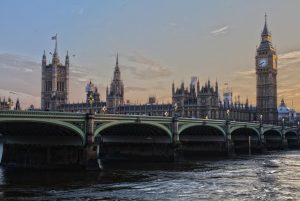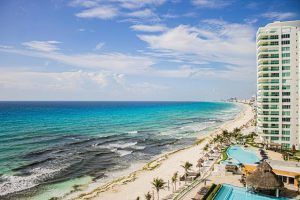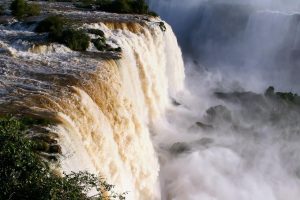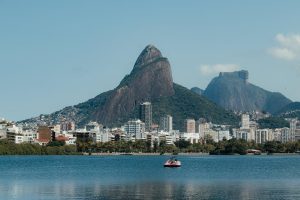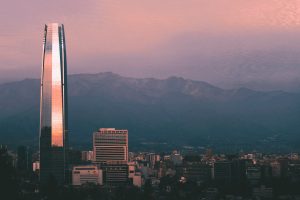Easter Island, a remote island in the South Pacific, has long captivated the imagination of explorers, archaeologists, and curious travelers alike. The enigmatic statues known as Moai, with their imposing presence and mysterious origins, continue to baffle experts.
As we embark on a journey to unravel the secrets of Easter Island, we will delve into the rich tapestry of Polynesian heritage that is intricately woven into the island's history. From the significance of the Moai to the cultural traditions that have been passed down through generations, we will explore the fascinating complexities of this island and the efforts to preserve its unique Polynesian legacy.
As we peel back the layers of time and immerse ourselves in the mysteries of Easter Island, prepare to be captivated by a tale that will leave you questioning and thirsting for more.
The Mysteries of the Moai
The enigmatic Moai statues of Easter Island have captivated researchers and tourists alike, their mysterious origins and purpose continuing to intrigue and baffle observers to this day.
The Moai, which were carved by the Rapa Nui people between the 13th and 16th centuries, are massive stone figures, with the largest reaching heights of over 30 feet and weighing up to 75 tons.
One of the most intriguing aspects of the Moai is the construction techniques used to create them. The Rapa Nui people carved the statues from compressed volcanic ash known as tuff, using stone tools and wooden wedges. They were then transported across the island using a system of ropes, sledges, and manpower.
The purpose of the Moai is still a subject of debate among researchers. Some theories suggest that they were ancestral representations, while others propose that they served as symbols of authority or markers of sacred sites. The exact purpose may vary from statue to statue, as each Moai may have held different significance for the Rapa Nui people.
Further research and excavation on Easter Island will continue to shed light on the mysteries surrounding the Moai and the ancient civilization that created them.
Unraveling Easter Island's Past
Through archaeological research and scientific analysis, scholars have been able to unravel the complex history of Easter Island, shedding light on the ancient civilization that once thrived on this remote Polynesian island. The archaeological discoveries made on Easter Island have provided valuable insights into the lives of the indigenous people and the factors that led to the decline of their civilization.
One of the most significant archaeological discoveries on Easter Island is the moai statues. These massive stone statues, scattered across the island, are believed to have been created by the island's early inhabitants, the Rapa Nui. Through careful excavation and study, researchers have been able to determine that the moai were carved from volcanic rock using stone tools, transported across the island using a system of sledges and ramps, and erected on ceremonial platforms known as ahu.
Additionally, archaeological excavations have revealed evidence of an advanced agricultural system on Easter Island. The Rapa Nui people cultivated crops such as sweet potatoes and taro using a technique known as contour farming, which involved the construction of terraces to prevent soil erosion and maximize the use of limited arable land.
Furthermore, the discovery of rock art and petroglyphs has provided further insights into the religious and cultural practices of the ancient Rapa Nui civilization. These carvings depict various symbols, animals, and human figures, offering glimpses into their belief systems and daily lives.
The Significance of Polynesian Heritage
Polynesian heritage holds significant cultural and historical importance, providing a rich tapestry of traditions, customs, and knowledge that has shaped the identity of the people of Easter Island and beyond. Preservation efforts play a vital role in safeguarding this heritage, ensuring its continued existence for future generations.
Preserving Polynesian heritage is crucial for maintaining cultural identity. The customs and traditions passed down through generations provide a sense of belonging and pride for the people of Easter Island. The unique practices, such as the creation and transportation of the Moai statues, are not only a testament to the ingenuity and craftsmanship of the Polynesian ancestors but also serve as a reminder of their enduring legacy.
Preservation efforts encompass various initiatives aimed at safeguarding Polynesian heritage. These include the documentation and recording of oral traditions, the restoration and protection of archaeological sites, and the promotion of traditional arts and crafts. By actively engaging in these efforts, the people of Easter Island are ensuring the survival and continuity of their cultural heritage.
Preserving Polynesian heritage also extends beyond Easter Island. The knowledge and traditions of Polynesia have influenced and shaped communities throughout the Pacific region. Recognizing and celebrating this shared heritage fosters a sense of unity and solidarity among Polynesian peoples, reinforcing cultural connections and collective identity.
Exploring the Cultural Traditions of Easter Island
Building upon the significance of preserving Polynesian heritage, we now turn our attention to exploring the rich cultural traditions of Easter Island. The island's cultural celebrations and traditional practices provide insight into the unique history and identity of its indigenous people, the Rapa Nui.
One of the most notable cultural celebrations on Easter Island is the Tapati Rapa Nui festival. This annual event takes place over two weeks and showcases various aspects of Rapa Nui culture, including music, dance, sports, and arts and crafts. During the festival, the island's inhabitants and visitors come together to participate in traditional competitions, such as canoe races, stone rolling, and body painting, all of which showcase the skills and traditions passed down through generations.
Traditional practices also play a significant role in the daily lives of the Rapa Nui people. For instance, the art of stone carving, which produced the famous Moai statues, continues to be a revered skill passed down through families. Additionally, the island's unique language, Rapa Nui, is still spoken by a small number of people, highlighting the importance of preserving cultural heritage.
Preserving the Polynesian Legacy
Preserving the rich cultural heritage of Polynesia requires a concerted effort to safeguard the traditional practices, languages, and customs that have been passed down through generations. One key aspect of preserving Polynesian legacy is through the promotion of sustainable tourism. Sustainable tourism aims to minimize the negative impact on the environment, while also respecting and supporting the local culture and community. By implementing sustainable tourism practices, such as responsible visitor management and the protection of natural resources, the unique cultural identity of Polynesia can be preserved for future generations.
Cultural identity plays a vital role in preserving the Polynesian legacy. It encompasses the beliefs, values, traditions, and customs that define a community. By promoting and celebrating Polynesian cultural identity, local communities can maintain a strong sense of pride and connection to their heritage. This can be achieved through various means, such as cultural festivals, traditional performances, and the revitalization of indigenous languages.
Furthermore, education plays a crucial role in preserving the Polynesian legacy. By educating both locals and visitors about the rich history and cultural significance of Polynesia, a deeper appreciation and understanding can be fostered. This can be done through the establishment of cultural centers, museums, and educational programs that provide insights into Polynesian traditions and practices.
Frequently Asked Questions
How Were the Moai Statues Transported and Erected on Easter Island?
Transportation methods for the moai statues on Easter Island remain a mystery. However, their erection involved a complex system of engineering marvels, likely utilizing sledges, ropes, and human labor to move and position the massive stone figures.
What Is the Meaning Behind the Intricate Designs Carved Onto the Moai Statues?
The intricate designs carved onto the moai statues hold symbolic significance and cultural interpretation. These designs, often depicting ancestors or deities, served as a way to honor and communicate with the spiritual realm in Polynesian culture.
What Caused the Decline of the Rapa Nui Civilization on Easter Island?
The decline of the Rapa Nui civilization on Easter Island can be attributed to a combination of factors, including environmental degradation, deforestation, soil erosion, resource depletion, and social and political unrest. These factors had a significant impact on the sustainability of the society.
Are There Any Ongoing Archaeological Excavations or Research Projects on Easter Island?
There are several ongoing archaeological excavations and research projects on Easter Island. These efforts aim to uncover the mysteries surrounding the island's past, including the construction and significance of the Moai statues, as well as the decline of the Rapa Nui civilization.
How Has the Polynesian Culture Influenced Other Parts of the Pacific Region?
The Polynesian culture has significantly influenced other parts of the Pacific region through their migration and cultural exchange. This has led to the spread of Polynesian languages, customs, and traditions, shaping the identity and heritage of many Pacific islands.
Conclusion
In conclusion, the enigma of the Moai and the rich Polynesian heritage of Easter Island continue to captivate researchers and visitors alike.
Unraveling the mysteries of the Moai has shed light on the island's past, while the significance of Polynesian heritage emphasizes the importance of preserving cultural traditions.
By embracing and preserving the Polynesian legacy, Easter Island ensures that future generations can continue to explore and appreciate its unique history and cultural heritage.


